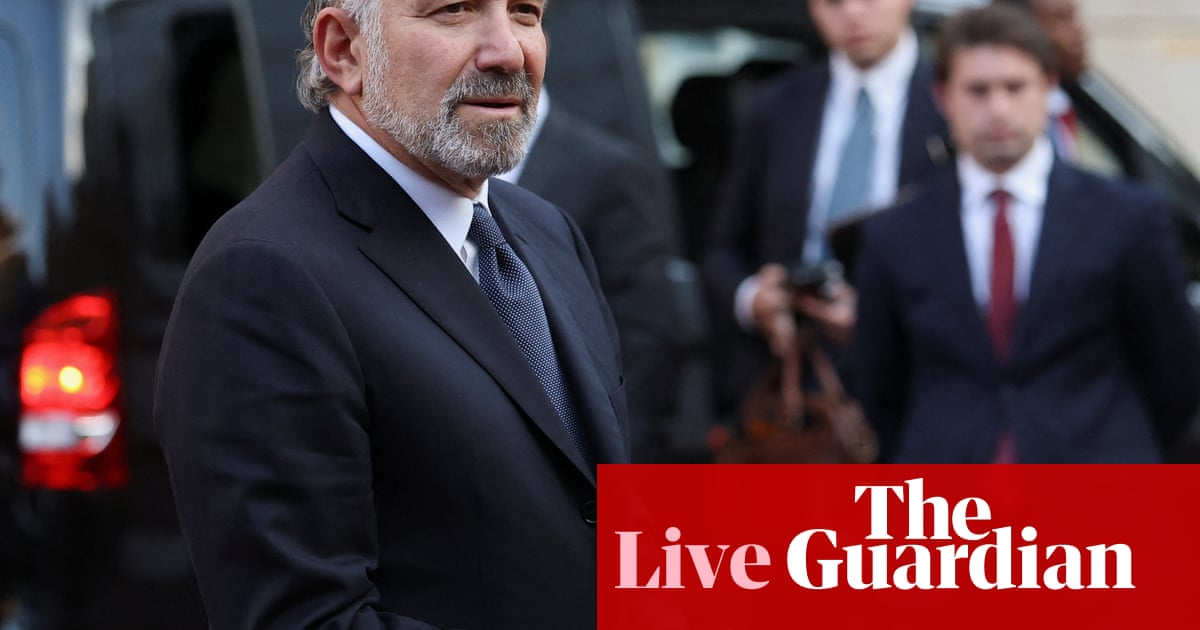US and China Agree to Framework Deal to Restore Trade War Truce
Good morning and welcome to an exciting update in the world of international trade and economics! Recent discussions between the US and China have led to the formulation of a significant framework deal aimed at easing tensions that have been mounting in their trade relationship.
The Importance of Dialogue
As Harold Macmillan famously said, “Jaw, jaw is better than war, war.” After two intense days of negotiations in London, the US and China have indeed engaged in productive dialogue, ultimately reaching a framework agreement to restore their trade war truce. This accord comes just a month following an initial agreement made during talks in Geneva, which paved the way for today’s developments.
Details from the Negotiations
Late last night, US Commerce Secretary Howard Lutnick announced the excitement surrounding the newly established framework, which is expected to alleviate critical restrictions on vital supplies like rare earth elements and magnets. This agreement is particularly crucial for American companies looking to secure the necessary materials for technology and manufacturing—materials that have recently faced shortages due to escalating tensions between the two economic superpowers.
Lutnick emphasized the need to address the “negativity” that has characterized the trade relationship. Central to this agreement is President Trump’s ongoing aim to reduce the trade deficit while increasing trade opportunities, marking the initial steps toward reconciliation.
Key Players and Perspectives
Chinese Vice Commerce Minister Li Chenggang characterized the discussions as “rational and candid,” asserting that the framework is in line with the consensus reached between President Trump and President Xi Jinping during their phone call on June 5. This assertion highlights the significant diplomatic efforts from both sides, stressing that reaching an agreement was a joint endeavor marked by constructive communication.
Interestingly, the negotiations took longer than anticipated, but rather than being drawn out by serious disagreements, the teams were reportedly fueled by a steady stream of snacks from popular fast-food chains such as McDonald’s and Burger King. This amusing detail adds a human element to the otherwise high-stakes environment.
Market Reactions and Future Implications
As news of the agreement circulates, investors are waiting with bated breath for further details that will confirm whether the deal satisfies the demands of both President Trump and President Xi. Traders are particularly attentive to the upcoming US inflation report, which may reveal the extent to which the trade war has impacted consumer prices. Economists predict the Consumer Price Index (CPI) may rise from 2.3% to 2.5% as a result of ongoing tensions.
While this agreement brings a sense of hope for a more stable economic relationship, analysts note that reactions are mixed. Jim Reid, a strategist at Deutsche Bank, cautions that while the news is positive, there’s disappointment over the lack of specifics surrounding the framework. Expectations remain high for concrete measures regarding export controls and other tariffs.
Chris Weston, head of research at brokerage Pepperstone, echoes this sentiment, asserting that the success of the agreement lies in the specifics. The crucial question remains: will the US and China manage to overcome the hurdles presented by rare earth exports and other contentious elements?
Broader Implications for Trade Relations
Adding to the conversation, industry experts highlight that this agreement is but a temporary achievement. While initial optimism prevails, uncertainties linger, particularly in context to US restrictions on chip exports to China. Lin Gengwei, CEO of Rain Tree Partners in Singapore, believes a shift in strategy may be necessary as pressures mount from both domestic and international stakeholders.
Moreover, Zeng Wenkai, chief investment officer at Shengqi Asset Management in Hong Kong, suggests that the global landscape of trade negotiations is evolving. Countries like Japan and South Korea are taking firmer stances, necessitating a re-evaluation of how the US approaches future trade talks.
Agenda Ahead
Looking forward, there are several key events on the economic calendar that will further shape the landscape of US-China trade relations. Later today, we expect to see the release of US weekly mortgage applications data, followed by Chancellor Rachel Reeves outlining the UK’s spending review. By 1:30 PM BST, the much-anticipated US inflation report for May will also be disclosed, offering further insights into how current trade dynamics affect the economy.
As the dust begins to settle on this newly shaped framework agreement, all eyes remain focused on the discussions ahead and the potential ramifications on the global economic stage. The coming weeks will undoubtedly provide more clarity on the commitments made and how they will be implemented.


